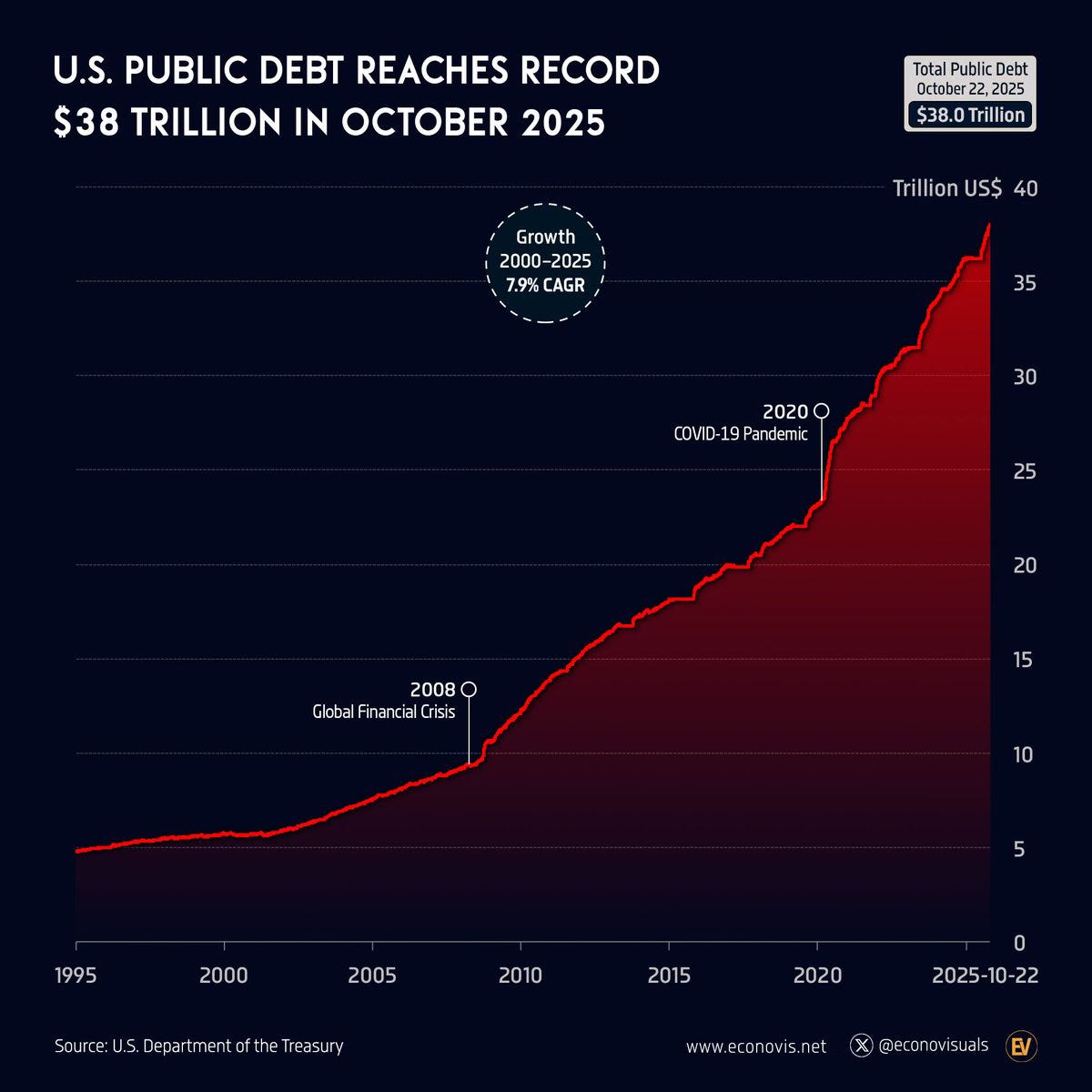America’s debt mountain hits 38 trillion dollars
Five charts to start your day
America’s economy is running on borrowed time as well as borrowed money. Public debt has surged past 38 trillion dollars, doubling in just over a decade and pushing the United States into uncharted fiscal territory. The country can still finance itself easily, but the numbers are becoming so large they bend the imagination.
At the same time, the nation is ageing. Within five years, there will be more grandparents than grandchildren. The United States was once defined by its youthful dynamism, but demographics are quietly rewriting that story. An older society demands more healthcare and pensions, yet produces fewer workers to fund them – an imbalance that feeds the very debt it relies upon.
China’s challenge looks different but echoes the same theme. Growth near 5% would once have thrilled policymakers, yet today it feels fragile. Debt, demographics and diminishing returns from stimulus are closing in there too. Across the Pacific, inflation in the US has eased but remains above target, leaving the Federal Reserve juggling conflicting pressures: cool prices without crashing growth, and service the debt without breaking the budget.
Quick note — Killer Charts has been $8/month and $80/year since launch two years ago. From 1 December the price for new subscribers will rise to $10/month and $100/year. If you’ve been meaning to upgrade, you can lock in the old rate for life here.CHART 1 • America’s debt mountain hits 38 trillion dollars
US public debt has reached a record 38 trillion dollars, a figure that has more than doubled in just over a decade. Since 2000, federal debt has grown at an annual rate of nearly 8%, far outpacing both population growth and inflation.
Major crises have fuelled this rise. The 2008 financial crash triggered massive stimulus spending, followed by another surge during the Covid-19 pandemic. Yet even in years of economic expansion, deficits have persisted, pushing debt to levels once thought unthinkable.
The United States now owes roughly 140% of its GDP, with interest payments alone becoming one of the largest items in the federal budget. For now, global demand for US debt remains strong, but every dollar borrowed today narrows the room for policy tomorrow.
Can the world’s largest economy keep financing itself indefinitely, or is this the point where confidence finally runs out?
Source: Econovisuals
The deeper question here isn’t just whether America can afford its debt, but what kind of world we’re building on it. Borrowing has become the silent engine of prosperity, a way of stretching the present at the expense of the future. As populations age and productivity slows, that trade-off grows harder to sustain.
I’ve got four more charts that expand on this story, but they’re for paid subscribers. Consider joining if you want the full edition.




